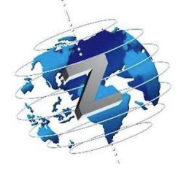Tempo de leitura: 7 minutos
After decades of giddy globalization, the pendulum is swinging back to the nation. These days, all the talk is about bringing the supply chains home. Congress just passed a nearly $400 billion bill intended to increasedomestic production, aid in a green energy transition and reduce foreign dependence. Pundits have declared the dawn of a new era — the age of economic nationalism. But what if globalization has progressed so far that it exists even within national borders, and we just haven’t had the right lenses to see it?
We are mistaken if we see the world only in the jigsaw map of nations, or take globalism and nationalism as binaries. The modern world is pockmarked, perforated, tattered and jagged, ripped up and pinpricked. Inside the containers of nations are unusual legal spaces, anomalous territories and peculiar jurisdictions. There are city-states, havens, enclaves, free ports, high-tech parks, duty-free districts and innovation hubs linking to other similar entities worldwide and often bypassing the usual system of customs controls. Without understanding these entities, we risk failing to understand not just how capitalism works but all the continuities between the past and present eras.
The geographic curiosities named above can be bundled under the common label of the zone. At its most basic, the zone is an enclave freed from ordinary forms of regulation. The usual powers of taxation are often suspended within their borders, letting investors effectively dictate their own rules. Zones are both of the host state and distinct from it. They come in a bewildering range of varieties — at least 82 by one official reckoning. At last count, the world hosts over 5,400 zones, about 30 times more than the total number of sovereign states.Zones originated in the U.S. warehouses of the New Deal years, which were legally designated as outside domestic territory, to avoid duties. In the 1950s and 1960s, zones came into their own, turning Puerto Rico and Taiwan into sites for low-wage manufacturing. In the 1980s and 1990s, Russia tried and failed to transform the entire country into a functioning capitalist economy overnight, while China used zones to open up sluices and locks to foreign investors and market-determined prices, rather than dynamiting the levee and letting it all flood in.
We see other versions of the zone in the self-governing financial center of the City of London, where businesses have votes in local elections, as well as in Britain’s overseas territories like the Cayman Islands, where transnational corporations secrete away their earnings from taxation.
Urban megaprojects — such as New Songdo City in South Korea and Neom, which is under construction in Saudi Arabia — are zones run under their own rules, like private city-states. In 2021, lawmakers in Nevada floated a similar idea, proposing to allow corporations that relocate to the state to write their own laws — the return of the frontier company town made over as the “innovation zone.” Elon Musk is reportedly planning for an incorporated town next to Austin, Texas, that would allow him to set some of his own regulations.
Zones are identifying spaces of the high age of globalization. These interconnected nodes allow for foreign ownership and management and often do an end run around central government. Another hot spot for zones is Dubai, which is a patchwork of what the historian Mike Davis called “legal bubble-domes” dedicated to different activities: Healthcare City is next to Media City is next to Internet City, each with a bespoke set of laws drawn up with foreign investors in mind. Dubai went global in the 2000s, acquiring ports up and down the African coast and into Southeast Asia and purchasing the P&O shipping line, the erstwhile pride of the British Empire. A former minor British dependency now owned the crown jewel of the empire’s commercial fleet.
If globalization is supposed to be unwinding in the last few years, somebody forgot to tell the zone. In Africa, there are already 200 zones, with 73 more announced for completion. Earlier in the pandemic, China moved forward with plans to turn the island of Hainan into a special economic zone with tax holidays for investors, duty-free shopping and relaxed regulations on pharmaceuticals and medical procedures. Even the Taliban has recently announced its intention to convert former U.S. military bases into special economic zones.Zones are also multiplying inside the borders of nations most identified with right-wing politics. The government of Prime Minister Narendra Modi of India, often described in terms of its Hindu chauvinism, has been ramping up special economic zones to compete with Singapore and Dubai for investors. Hungary under President Viktor Orban, self-described standard-bearer for “illiberalism,” created its first special economic zone in 2020 to secure the South Korean tech giant Samsung.
President Donald Trump’s one significant piece of legislation as president — his 2017 tax cut — included a raft of new “opportunity zones” where investors could lower their taxes to what Mr. Trump called “a very big, fat, beautiful number of zero” and amounted to subsidies for real estate developers and friends like Anthony Scaramucci. Perhaps the most notorious of recent zones is New York City’s Hudson Yards development, which earned huge tax breaks by financially gerrymandering an absurd path from the bougie Chelsea neighborhood up to distressed East Harlem.
The capitalist Cinderella stories of Dubai and Shenzhen can make zones seem like a magic formula for economic growth — just draw a line on a map, loosen taxes and regulations and wait for investors to rush in. But “dream zones” rarely work the magic they claim to — and can often bring unexpected consequences.
In Boris Johnson’s first speech as Britain’s prime minister, in July 2019, he touted a series of zones on the coast called free ports as a magic bullet for returning industrialization to the north. His plan was based on the 2016 proposal of an obscure politician who is himself now prime minister, Rishi Sunak. Margaret Thatcher’s cheerleaders sold these zones as ways to allow for small-scale freewheeling entrepreneurship to be liberated from the dead weight of regulations. The reality turned out differently: In the only successful example — Canary Wharf — real estate developers profited from billions of dollars in tax breaks and state support to hand over assets to offshore buyers who put their own profits on a conveyor belt, heading right back out of the country.
In Britain, the risks of bargaining away slivers of sovereignty became clear last year, when the entire 800-person British work force of P&O Ferries was fired without notice. Shocked observers wondered how this was possible. The answer: through a trick of the zone. The ships sailed from British ports, but they flew flags of other countries, including the British overseas territory of Bermuda, and operated under their labor laws. They were in British waters but not of Britain. The multiplication of freeports by Mr. Sunak will bring more such cases. The tribunes of Brexit claimed they were “taking back control” from Brussels, but zones cede control by other means.Efforts to rein in fleet-footed tax avoiders through global tax enforcement have run into aggrieved assertions of sovereignty from small Caribbean states. Among those slowing the passage of a global minimum corporate tax until recently was illiberal Hungary. The nationalists sided with the superrich titans of Davos, whom they otherwise use as punching bags — revealing that the policies of the nationalists represent more continuity than rupture with 1990s-style globalization. Watching the zones reveals holes in the rhetoric of the populists.
Even as the zeitgeist on state intervention changes, it’s important to remember that when it comes to all-important questions of distribution — who gets what — the level of the nation or the world are rarely the most relevant scales. States and countries are fighting with each other to offer bigger incentives in ways that may not always lead to better outcomes for citizens. Ring-fenced patches of territory with different sets of laws are still the tissue of everyday economics even in an age of resurgent nationalism. Keeping an eye on the zone helps us be clear about what is new and what is old in the latest Brave New Age.
Quinn Slobodian is professor of the history of ideas at Wellesley College. .”https://www.nytimes.com/2023/03/12/opinion/economic-zones-global-economy.html






Os comentários foram encerrados, mas trackbacks e pingbacks estão abertos.